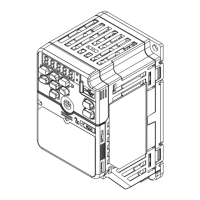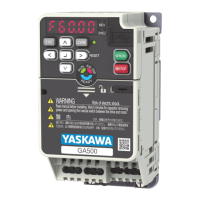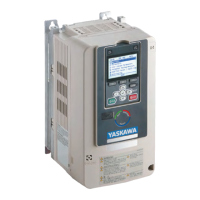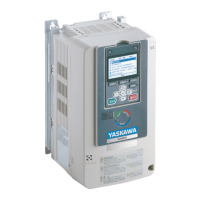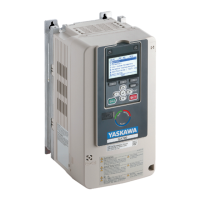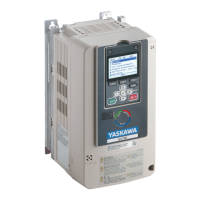2.4 Fault
52 YASKAWA TOEPYAIGA5001A GA500 DRIVE MAINTENANCE & TROUBLESHOOTING
Code Name Causes Possible Solutions
oH1 Heatsink Overheat
The ambient temperature is high and the heatsink
temperature of the drive is more than the oH1
detection level.
• Measure the ambient temperature.
• Increase the airflow in the control panel.
• Install a cooling device (cooling fan or air conditioner) to lower
the ambient temperature.
• Remove objects near the drive that are producing too much heat.
The load is too heavy. • Measure the output current.
• Decrease the load.
• Decrease the value set in C6-02 [Carrier Frequency Selection].
Note:
• The drive detects this fault if the heatsink temperature of the drive is more than the oH1 detection level. o2-04 [Drive Model (KVA) Selection] determines the oH1 detection level.
• Do a Fault Reset to clear the fault.
• L5-08 [Fault Reset Enable Select Grp2] disables the Auto Restart function.
Code Name Causes Possible Solutions
oH3 Motor Overheat (PTC Input)
The thermistor wiring that detects motor temperature
is defective.
Correct wiring errors.
A fault occurred on the machine.
Example: The machine is locked.
Examine the machine and remove the cause of the fault
The motor has overheated. • Check the load level, acceleration/deceleration time, and motor
start/stop frequency (cycle time).
• Decrease the load.
• Increase the values set in C1-01 to C1-08 [Acceleration/
Deceleration Times].
• Set E2-01 [Motor Rated Current (FLA)] correctly to the value
specified by the motor nameplate.
• Make sure that the motor cooling system is operating correctly,
and repair or replace it if it is damaged.
• Adjust E1-04 to E1-10 [V/f Pattern Parameters]. For motor 2,
adjust E3-04 to E3-10. Decrease the values set in E1-08 [Mid
Point A Voltage] and E1-10 [Minimum Output Voltage].
Note:
If the values set in E1-08 and E1-10 are too low, the overload
tolerance will decrease at low speeds.
Note:
• When H3-02 or H3-10 = E [MFAI Function Select = Motor Temperature (PTC Input)], the drive detects this fault if the motor overheat signal input from analog input terminal A1
or A2 is more than the alarm detection level.
• Do a Fault Reset to clear the fault.
• If the drive detects this fault, it will operate the motor as specified by the Stopping Method set in L1-03 [Motor Thermistor oH Alarm Select].
Code Name Causes Possible Solutions
oH4 Motor Overheat Fault (PTC Input)
The motor has overheated. • Check the load level, acceleration/deceleration time, and motor
start/stop frequency (cycle time).
• Decrease the load.
• Increase the values set in C1-01 to C1-08 [Acceleration/
Deceleration Times].
• Set E2-01 [Motor Rated Current (FLA)] correctly to the value
specified by the motor nameplate.
• Make sure that the motor cooling system is operating correctly,
and repair or replace it if it is damaged.
• Adjust E1-04 to E1-10 [V/f Pattern Parameters]. For motor 2,
adjust E3-04 to E3-10. Decrease the values set in E1-08 [Mid
Point A Voltage] and E1-10 [Minimum Output Voltage].
Note:
If the values set in E1-08 and E1-10 are too low, the overload
tolerance will decrease at low speeds.
Note:
• The drive detects this fault if the motor overheat signal in analog input terminals A1, or A2 is more than the Fault detection level. (If H3-02, H3-10= E [Terminal A1/A2 Function
Select = Motor Temperature (PTC Input)].)
• Do a Fault Reset to clear the fault.
Code Name Causes Possible Solutions
oL1 Motor Overload
The load is too large. Decrease the load.
Note:
Reset oL1 when U4-16 [Motor oL1 Level] < 100.
The acceleration/deceleration times or cycle times are
too short.
• Examine the acceleration/deceleration times and the motor start/
stop frequencies (cycle times).
• Increase the values set in C1-01 to C1-08 [Acceleration/
Deceleration Times].

